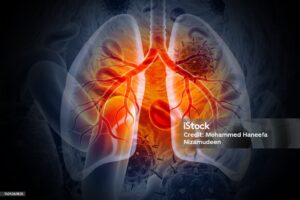Introduction to the Healthcare Landscape in Pakistan
Pakistan, a country with over 220 million people, faces numerous challenges in its healthcare system. Disparities between urban and rural healthcare facilities, limited access to quality medical care, and a growing population contribute to the complex health landscape. Despite these challenges, there is a concerted effort from both government and non-governmental organizations to address the health issues and improve the overall well-being of its citizens.
This article aims to provide an in-depth look at the most common diseases in Pakistan that affect the population, delving into their symptoms, causes, and available treatments. It will also discuss preventive measures and public health initiatives designed to tackle these diseases. By shedding light on personal stories and expert insights, we aim to underscore the importance of awareness, preventive care, and accessible healthcare services in combatting these prevalent health issues.
Overview of the Most Common Diseases Affecting the Population
Understanding the common diseases in Pakistan is crucial for developing effective public health strategies and improving patient outcomes. Here are some of the most prevalent diseases that significantly impact the population:
-
Dengue Fever
-
Diabetes
-
Hepatitis C
-
Tuberculosis
-
Breast Cancer
Let’s delve into each of these diseases, exploring their symptoms, causes, treatment options, and preventive measures.
In-Depth Analysis of Each Common Diseases in Pakistan
Dengue Fever
Symptoms
Dengue fever is a mosquito-borne viral infection that causes a severe flu-like illness. Common symptoms include:
- High fever
- Severe headache
- Pain behind the eyes
- Joint and muscle pain
- Rash
- Nausea and vomiting
Causes
Dengue is transmitted by Aedes mosquitoes, which are common in tropical and subtropical regions. Poor sanitation and stagnant water create breeding grounds for these mosquitoes, contributing to the spread of the disease.
Treatments
There is no specific treatment for dengue fever. Supportive care, including hydration, pain relief, and rest, is essential. In severe cases, hospitalization may be required to manage complications such as dengue hemorrhagic fever or dengue shock syndrome.

Personal Story: A Young Woman’s Battle with Dengue
A young woman from Lahore shares her battle with dengue fever, highlighting the importance of early diagnosis and access to quality care. She describes her symptoms, hospital stay, and recovery, emphasizing the significance of raising public awareness and taking preventive actions.
Diabetes
Symptoms
Diabetes is a chronic condition characterized by high blood sugar levels. Common symptoms include:
- Frequent urination
- Excessive thirst and hunger
- Unexplained weight loss
- Fatigue
- Blurred vision
- Slow-healing sores
Causes
Type 1 diabetes results from the body’s immune system attacking insulin-producing cells in the pancreas. Type 2 diabetes is often related to lifestyle factors such as obesity, poor diet, and lack of physical activity.
Treatments
Diabetes management involves regular blood sugar monitoring, insulin therapy (for Type 1), oral medications (for Type 2), and lifestyle modifications such as a healthy diet and regular exercise.
Personal Story: Living with Diabetes
A senior citizen living with diabetes discusses daily management, challenges, and the impact of lifestyle changes. His testimony underscores the need for community support and education on preventive measures.
Hepatitis C
Symptoms
Hepatitis C is a liver infection caused by the hepatitis C virus (HCV). Symptoms include:
- Fatigue
- Jaundice (yellowing of the skin and eyes)
- Dark urine
- Abdominal pain
- Loss of appetite
- Nausea
Causes
Hepatitis C is primarily transmitted through contact with infected blood, often through sharing needles or medical equipment. It can also be spread through unprotected sexual contact or from mother to child during childbirth.
Treatments
Antiviral medications can cure hepatitis C in most cases, but early diagnosis and treatment are crucial. Access to affordable and effective treatment options is essential for managing the disease.
Personal Story: A Family’s Journey with Hepatitis C
A family’s experience with hepatitis C sheds light on the journey from diagnosis to treatment. Their story highlights the importance of raising awareness about the prevalence of the disease and the need for accessible therapies.
Tuberculosis (TB)
Symptoms
Tuberculosis is a bacterial infection that primarily affects the lungs. Symptoms include:
- Persistent cough (lasting three weeks or longer)
- Chest pain
- Coughing up blood
- Fatigue
- Weight loss
- Night sweats
- Fever

Common Diseases in Pakistan
Causes
The bacterium Mycobacterium tuberculosis causes TB and spreads through the air when an infected person coughs or sneezes. Overcrowded living conditions and weakened immune systems increase the risk of TB transmission.
Treatments
Treatment for TB involves a course of antibiotics taken over several months. Adherence to the entire course of treatment is critical to preventing the development of drug-resistant TB strains.
Personal Story: A Healthcare Worker’s Perspective
A healthcare worker shares their experience in the fight against TB, shedding light on the challenges in diagnosis, treatment adherence, and the role of public health programs in curbing the spread of the disease.
Breast Cancer
Symptoms
Breast cancer is a malignant tumour that develops in the breast cells. Symptoms include:
- A lump in the breast or underarm
- Change in the size, shape, or appearance of the breast
- Dimpling or puckering of the skin
- Nipple discharge (other than breast milk)
- Pain in any area of the breast
Causes
While the exact cause of breast cancer is unknown, risk factors include age, family history, genetic mutations (such as BRCA1 and BRCA2), and lifestyle factors such as alcohol consumption and lack of physical activity.
Treatments
Treatment options for breast cancer vary depending on the stage and type of cancer and may include surgery, radiation therapy, chemotherapy, hormone therapy, and targeted therapy. Early detection through regular screenings is crucial for successful treatment.
Personal Story: A Breast Cancer Survivor’s Journey
A breast cancer survivor reflects on navigating the healthcare system for early detection and the support received during treatment. Her story emphasizes the importance of regular screenings and the value of emotional and community support.
Discussion on Preventive Measures and Public Health Initiatives
Preventive measures and public health initiatives play a vital role in reducing the incidence and impact of common diseases in Pakistan. Here are some key strategies:
Dengue Fever Prevention
- Eliminating mosquito breeding sites by removing stagnant water
- Using mosquito repellents and nets
- Public awareness campaigns on dengue prevention
Diabetes Prevention
- Promoting healthy eating habits and regular physical activity
- Regular screenings for early detection
- Community-based programs to educate about diabetes and its management
Hepatitis C Prevention
- Ensuring safe blood transfusions and medical practices
- Public education on avoiding sharing needles and practicing safe sex
- Vaccination programs, where applicable
Tuberculosis Prevention
- Public awareness campaigns on TB symptoms and treatment
- Ensuring access to diagnostic tools and treatment
- Strengthening public health infrastructure to support TB control programs
Breast Cancer Prevention
- Encouraging regular breast self-exams and clinical screenings
- Promoting a healthy lifestyle to reduce risk factors
- Providing access to affordable mammograms and diagnostic services
Insights from Medical Professionals and Personal Stories
Gaining firsthand perspectives from individuals impacted by these illnesses and healthcare experts at the forefront can offer invaluable insights. Their experiences highlight the importance of timely diagnosis, effective treatment, and the need for comprehensive public health strategies.
Conclusion
The prevalence of common diseases in Pakistan underscores the critical need for awareness, prevention, and access to quality healthcare. By understanding the symptoms, causes, and treatment options for diseases like dengue fever, diabetes, hepatitis C, tuberculosis, and breast cancer, we can better equip ourselves to combat these health challenges.
Public health initiatives, preventive measures, and personal stories all play crucial roles in this fight. Together, we can work towards a healthier future for all Pakistani citizens.
For more in-depth information and resources on these diseases, visit our website and join our community of health enthusiasts and professionals dedicated to making a difference.
Stay informed and stay healthy.
—
Keywords: Common Diseases in Pakistan, Healthcare Landscape, Preventive Measures
 Touch Blog
Touch Blog


